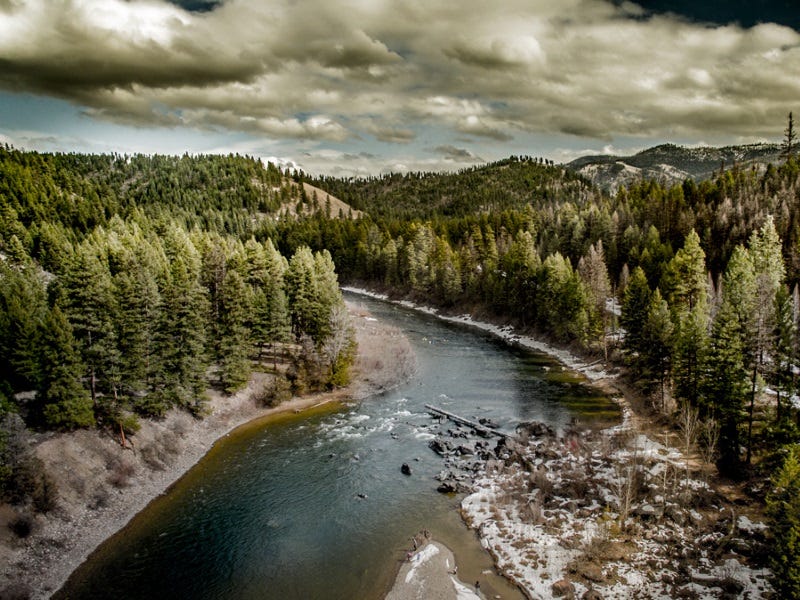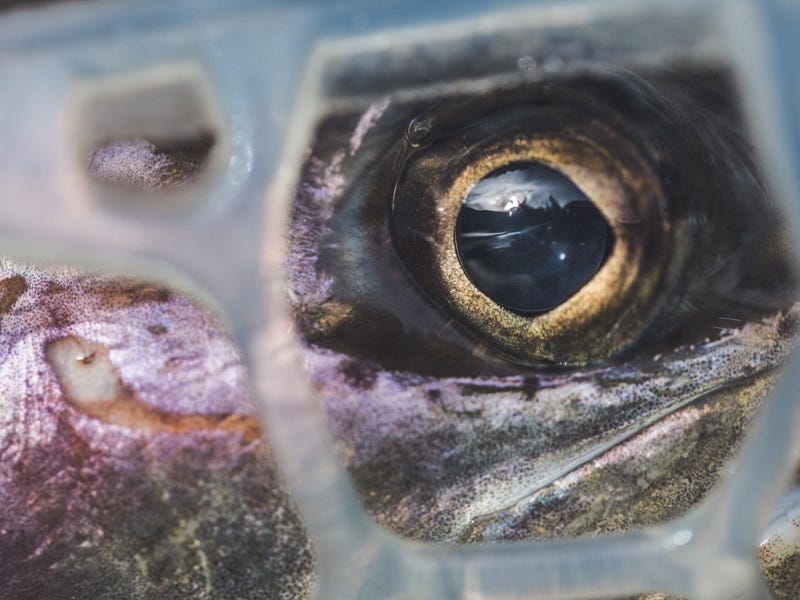Skip the Root

by Joe Cummings

Forgoing the Skwala
Each March and April a fly-fishing spotlight shines hotly on western Montana’s Bitterroot River. The “promise” of voracious trout wildly spree-feeding on floating mats of freshly hatched skwala stoneflies lure bleary anglers from their fly-tying dens in desperate attempts to shake the dreaded shack-nasties.
These hollow-eyed zombies are looking for dry-fly salvation. And you can’t blame them. But that enthusiasm often creates an armada on the river. Wade anglers add to the mix.
Due to that pressure, the Bitterroot’s dry-fly action has become hyper technical, with leaders getting longer, and flies smaller. Timing the weather also has become crucial to getting some legitimate spring action on top. When the stars align, anglers count their days as some of the best of their lives. Other times, they may wonder if there wasn’t a better option. That’s why, when conditions are right, savvy anglers, including my guides, might forgo the skwala and explore the darker edges of western Montana’s fly-fishing landscape.
Dodge the Bitterroot?
Everyone loves spring fishing because the trout have been left alone all winter and may have forgotten what flies with hooks do to mandibles. Rising water temps and a move by our rainbows into pre-spawn mode creates additional opportunity for anglers.
But, the Bitterroot’s fish get smart quickly, figuring out which dry flies bite back. That’s why my guides closely watch the water temperature in other nearby drainages, such as the Blackfoot, Rock Creek and the Clark Fork, so they can take advantage of trout that haven’t been overly educated or had a barbed T-Bone sunk into their jaws.
Warming Blue Water on the Blackfoot
The Blackfoot River is one of our options for escaping the spotlight. We like it best when it is low, clear and “Blackfoot blue.” Lower flows mean there’s less water volume to heat, and on warm, sunny days an afternoon temperature spike creates a nice afternoon feed window.
On the Bitterroot, those conditions can detrimental to fishing, as those magical spring days are beautiful for a float but sometimes remarkably bad for the fishing. Those conditions often drive the fish deeper and they shy away from the dry fly. On the Blackfoot, however, which doesn’t see the pressure that the Bitterroot receives, the fish stay aggressive to the dry. And that clear and bluish water also allows us to drive nymphs through medium-depth riffles that connect to deeper holding water.
Part of the appeal are the Blackfoot’s trout. You’ll catch lots of rainbows and cutthroats and some larger browns. The rainbows and cutts range to 17 or 18 inches; the browns can top 20 and they eat a variety of flies, including stonefly nymphs and dries and, of course, streamers.

Access and Flies for Montana’s Blackfoot River
If you drift the Blackfoot during spring make sure you have chains for your truck or at least scout your put-ins and take-outs ahead of time. The Blackfoot doesn't get a lot of southern exposure so the boat ramps in March and April can be treacherous, covered with ice and snow. Some ramps are totally ice-bound so you may have to get creative and slide a boat through closed campgrounds to reach the river. If you are a wade fisher a good wading staff gets you through the snow banks and keeps you on your feet when fishing this rocky river.
Difficult access isn’t a bad thing. In fact, if access is difficult you can bet that the trout in that section haven’t seen much pressure. Once you find some willing fish you’ve got it made—regarding fly selection these fish aren’t too picky. We generally rig a stonefly nymph on 3X tippet, six feet under a strike indicator, Then we add a 14 inches of 4X tippet to the lead fly and tie on a San Juan Worm or any size-12 beadhead nymph. As mentioned, we fish that setup in medium-to slower speed water adjacent to deeper runs where the fish can hold when water temperatures drop.
Not all of our fishing is under the indicator. On the best days, when water temps line up, we see midges and Capnia stoneflies. When this happens, a size 16-20 dry midge pattern is deadly. Pods rising to these bugs can be numerous. For that reason, we usually run shortish sections and work these pods methodically. Patience while dissecting the right water on the Blackfoot is a crucial to success.
Try the ‘Root, Fish the Black
Don’t get me wrong—I still fish the skwala hatch, but I know the beast. And believe me, I like sinking big dries into the jaws of rising trout as much as the next guy. But sometimes the whole zombie scene gets me looking elsewhere and that’s when I have to forget the skwala and head to Blackfoot’s blue water. If you’re feeling the same pain, and you want a different spring experience in western Montana, you may want to do the same.
Note: Want to book a trip on the Blackfoot and other area waters? Contact Cummings at Missoula River Lodge (877-327-7878) or visit his Web site at montanaflyfishingguide.com
